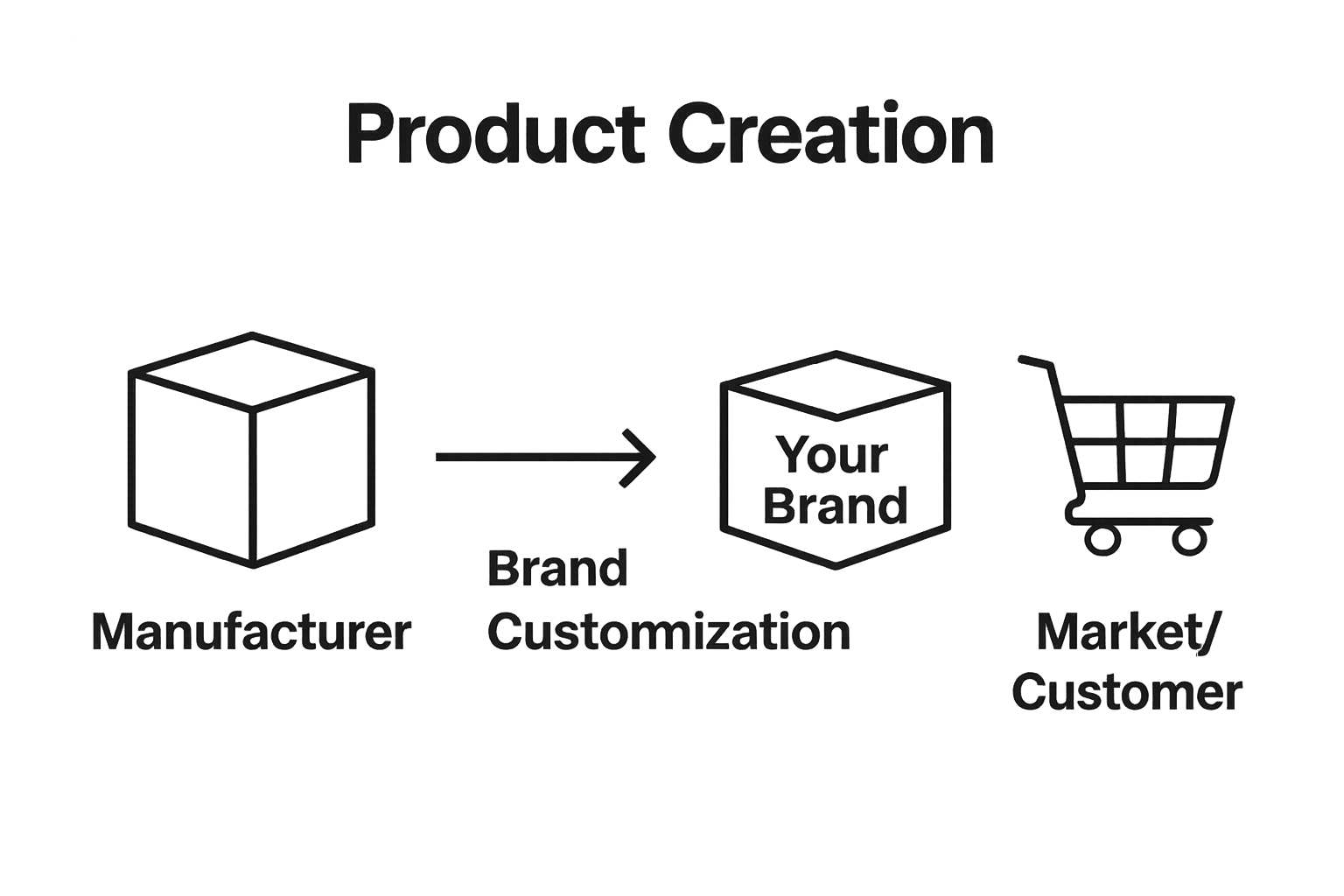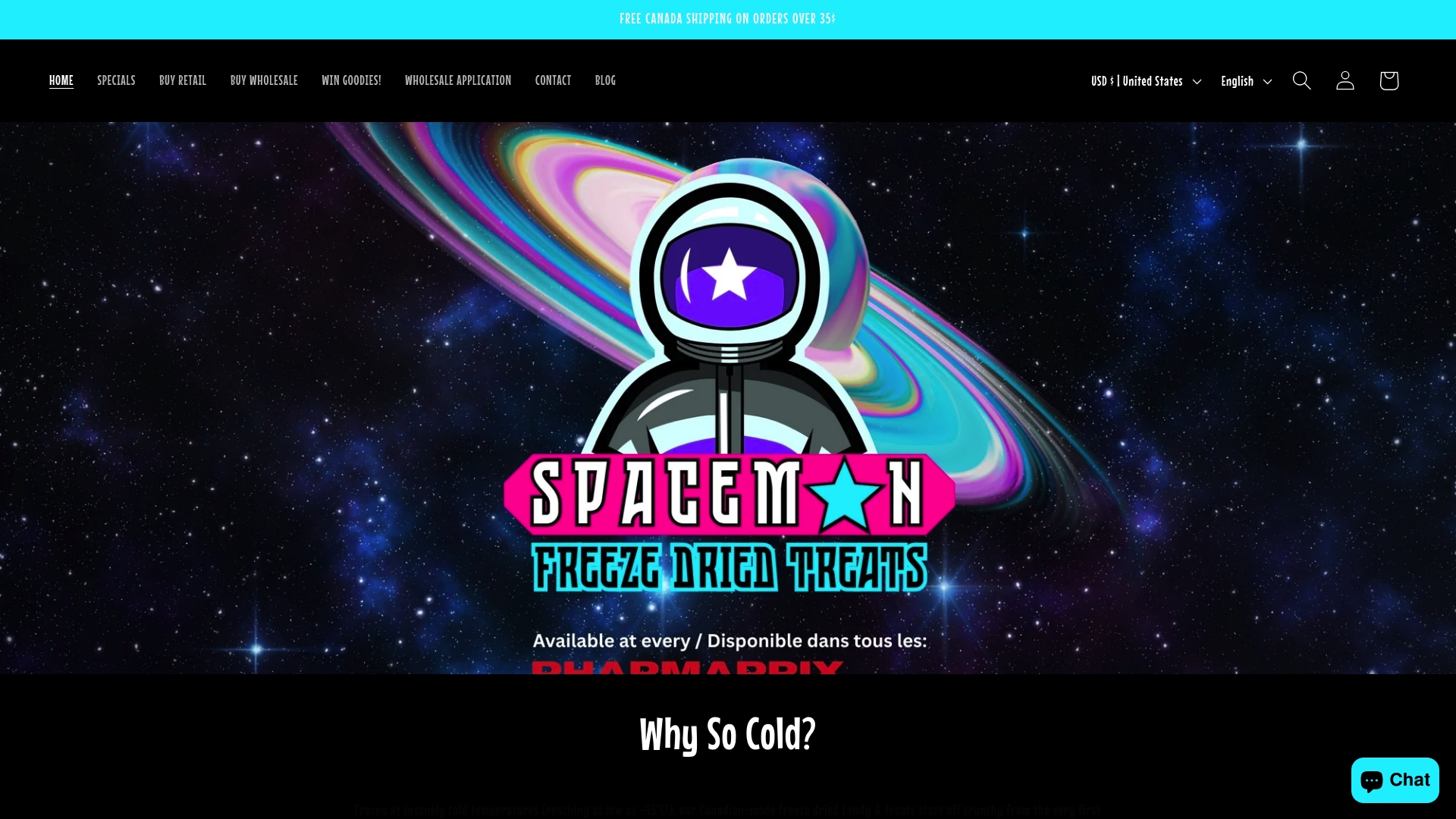
La marque blanche permet à une entreprise de vendre le produit d'une autre comme s'il s'agissait du sien, sans avoir recours à des usines coûteuses ni à de longs délais de développement. Cela peut paraître une solution de facilité, mais les statistiques sont surprenantes. Les études montrent que la marque blanche aide les petites entreprises à rivaliser directement avec les grandes en leur offrant un accès rapide à de nouveaux marchés et produits. Ce simple changement d'étiquette influence désormais la manière dont les marques se font concurrence et détermine les produits disponibles en magasin.
Table des matières
- Définition du White Labeling : les bases expliquées
- L'importance du white labeling en entreprise
- Comment fonctionne le white labeling : processus et relations
- Concepts clés du white labeling : produits, marques et marchés
- Exemples de marque blanche dans différents secteurs d'activité
Résumé rapide
| Emporter | Explication |
|---|---|
| La marque blanche réduit les coûts de fabrication | Les entreprises peuvent proposer des produits sans investir dans leurs propres installations de production, ce qui réduit considérablement leurs coûts opérationnels. |
| Accès plus rapide au marché grâce à la marque blanche | Les entreprises peuvent ainsi lancer rapidement de nouveaux produits, ce qui leur permet de répondre promptement aux demandes du marché sans longs délais de développement. |
| Une image de marque personnalisée renforce l'attrait du produit | Les entreprises ont un contrôle total sur leur marque, leur emballage et leurs prix, ce qui leur permet un positionnement unique sur le marché et les différencie de leurs concurrents. |
| Les relations de collaboration sont essentielles dans le domaine du white labeling. | Des partenariats fructueux entre fabricants et agences de branding sont essentiels, axés sur le contrôle qualité et les avantages mutuels pour la réussite commerciale. |
| Les avantages économiques démocratisent l'accès au marché | Le white labeling permet aux petites entreprises de concurrencer efficacement les grandes entreprises en proposant des produits de qualité adaptés à leur identité de marque. |
Définition du White Labeling : les bases expliquées
Le white labeling est une pratique commerciale stratégique où un produit ou un service, conçu par une entreprise, est commercialisé sous une autre marque. Cette approche permet aux entreprises de proposer des produits sans investir dans des processus de fabrication ou de développement complexes. Une étude de Springer souligne que le white labeling est une stratégie courante dans le commerce moderne, permettant aux entreprises d'étendre efficacement leur marché.
Qu’est-ce que le White Labeling exactement ?
En résumé, le white labeling consiste à acheter un produit générique auprès d'un fabricant, puis à y apposer sa propre marque, son emballage et ses stratégies marketing. C'est un peu comme acheter un t-shirt blanc uni et le personnaliser avec son logo et son design. Le fabricant d'origine reste discret, tandis que l'entreprise acheteuse commercialise le produit comme sa propre offre exclusive.
Les principales caractéristiques du white labeling sont les suivantes :
- Pas de frais généraux de fabrication : les entreprises peuvent proposer des produits sans avoir à construire d'usines de production.
- Entrée rapide sur le marché : Lancement rapide de nouvelles gammes de produits avec un investissement minimal
- Personnalisation de la marque : Contrôle total sur l’image de marque, l’emballage et les prix
Comment fonctionne le White Labeling en pratique
Le processus suit généralement un flux de travail simple.
Un fabricant produit un produit standard facilement adaptable. Les entreprises achètent ensuite ces produits en gros, y apposent leur marque et les vendent via leurs propres circuits de distribution.
Par exemple, de nombreux détaillants utilisent la marque blanche pour créer des produits de marque distributeur qui concurrencent les marques connues. En se documentant davantage sur les stratégies de marque distributeur , les entreprises peuvent mieux comprendre comment ce modèle peut générer un avantage concurrentiel.
Le white labeling offre une flexibilité remarquable dans divers secteurs, des technologies et de l'électronique à l'agroalimentaire et aux biens de consommation. Les entreprises peuvent tirer parti de cette approche pour diversifier rapidement leur offre de produits sans investissements initiaux importants en recherche et développement.
L'importance du white labeling en entreprise
Le white labeling est devenu une stratégie essentielle pour les entreprises en quête d'un avantage concurrentiel et d'une expansion de marché. Une étude publiée dans l'International Journal of Research in Marketing révèle que le white labeling permet aux petites entreprises de rivaliser efficacement avec les grandes en proposant des produits et services similaires, tout en concentrant leurs ressources sur le marketing et l'expérience client.
Croissance stratégique de l'entreprise et pénétration du marché
Les entreprises tirent parti du white labeling comme d'un puissant levier de croissance stratégique. En s'associant à des fabricants établis, elles peuvent rapidement lancer de nouvelles gammes de produits sans investissements importants en recherche, développement et infrastructure de production. Cette approche leur permet de diversifier leur offre et de pénétrer les marchés plus rapidement que les méthodes de développement de produits traditionnelles.
Les principaux avantages stratégiques du white labeling sont les suivants :
- Risque financier réduit : capital initial minimal requis pour la création du produit
- Délai de commercialisation plus court : Lancement rapide du produit sans cycles de développement complexes
- Flexibilité en matière de marque : Maîtrise totale de la présentation et du positionnement du produit
Avantages économiques et positionnement concurrentiel
La marque blanche offre des avantages économiques considérables en réduisant les coûts opérationnels et en permettant aux entreprises d'allouer leurs ressources plus efficacement. Elles peuvent ainsi réorienter les fonds habituellement consacrés à la production vers le marketing, l'acquisition de clients et le développement de leur marque.
Pour les entreprises souhaitant diversifier leur gamme de produits, comprendre comment mettre en place une stratégie de marque propre peut ouvrir de nouvelles sources de revenus et de nouvelles opportunités de marché. Ce modèle leur permet de créer des expériences de marque uniques sans les complexités du développement de produits traditionnel.
De plus, la marque blanche démocratise l'accès au marché. Les PME peuvent désormais rivaliser avec les grandes entreprises en proposant des produits de haute qualité, fabriqués professionnellement et adaptés à leur identité de marque. Cette approche réduit non seulement les barrières à l'entrée, mais favorise également l'innovation et la diversification du marché.
Comment fonctionne le white labeling : processus et relations
Le white labeling repose sur des relations commerciales complexes et des processus stratégiques permettant aux entreprises de commercialiser efficacement leurs produits. Les recherches analysant les pratiques de white labeling révèlent une approche systématique où fabricants et marques partenaires collaborent pour créer des offres de produits personnalisées.
La relation de marque blanche de base
Au cœur du white labeling se trouvent deux acteurs principaux : le fabricant et la société de branding.
 Le fabricant produit un produit générique de haute qualité, conçu pour être facilement adaptable. L'agence de branding achète ensuite ces produits en gros, en y appliquant son identité de marque, son emballage et sa stratégie marketing spécifiques.
Le fabricant produit un produit générique de haute qualité, conçu pour être facilement adaptable. L'agence de branding achète ensuite ces produits en gros, en y appliquant son identité de marque, son emballage et sa stratégie marketing spécifiques.
Les éléments clés d'un partenariat de marque blanche réussi comprennent :
- Contrôle qualité : Normes rigoureuses respectées par le fabricant d'origine
- Accords contractuels : Conditions claires définissant la production, la tarification et les droits de marque
- Alignement stratégique mutuel : Objectifs partagés en matière de développement de produits et de positionnement sur le marché
Flux de travail opérationnel et exécution
Le processus de marque blanche suit un flux de travail structuré qui transforme un produit générique en une offre de marque. Dans un premier temps, l'entreprise spécialisée dans la marque identifie un fabricant capable de produire le produit souhaité. Les négociations portent sur des aspects essentiels tels que les spécifications du produit, les quantités minimales de commande et les structures tarifaires.
Une fois l'accord conclu, le fabricant produit le produit de base selon des spécifications prédéterminées. L'agence de branding prend alors en charge :
- Conception d'emballages personnalisés
- Création de supports marketing
- Fixation des prix de détail
- Distribuer par l'intermédiaire de leurs canaux établis
Pour les entreprises intéressées par l'exploration de ce modèle, la compréhension des stratégies d'emballage personnalisées peut fournir des informations précieuses pour créer des expériences de marque distinctives.
En définitive, la marque blanche représente un modèle commercial sophistiqué qui permet aux entreprises de tirer parti de leur expertise en matière de fabrication existante tout en conservant un contrôle total sur la présentation de leur marque et leur positionnement sur le marché.
Concepts clés du white labeling : produits, marques et marchés
Une étude de la Harvard Business Review met en lumière la transformation du white labeling, passé d'une stratégie marginale à une approche marketing sophistiquée. Cette méthode permet aux entreprises de créer des identités de marque uniques en tirant parti de leurs capacités de production existantes et des opportunités de marché.
Dynamique des produits en marque blanche
Le modèle de marque blanche repose fondamentalement sur trois éléments interdépendants : le produit, la marque et le positionnement sur le marché. Le produit constitue la composante essentielle ; il s’agit d’un article générique offrant une grande adaptabilité. Les fabricants conçoivent ces produits pour répondre aux normes du marché tout en permettant d’importantes possibilités de personnalisation.
Ce tableau récapitule les principales caractéristiques des produits en marque blanche, permettant de distinguer leurs attributs et avantages fondamentaux.
| Caractéristiques | Description |
|---|---|
| Standardisation | Les produits sont fabriqués pour garantir une qualité constante entre les marques. |
| Adaptabilité | Facilement adaptable aux besoins spécifiques de l'image de marque et du marché |
| Évolutivité | Capable d'ajuster les volumes de production en fonction de la demande changeante |
| Image de marque personnalisée | Permet un contrôle total sur la conception, l'emballage et le marketing |
| Aucuns frais généraux de fabrication | Élimine le besoin d'installations de production séparées |
Les principales caractéristiques des produits en marque blanche comprennent :
- Standardisation : Qualité constante pour toutes les implémentations de marques différentes
- Adaptabilité : Modification facile pour répondre aux exigences spécifiques de la marque
- Évolutivité : Capacité à répondre à des volumes de demande du marché variables
Identité de marque et positionnement sur le marché
Les marques qui utilisent le white label transforment des produits génériques en offres uniques sur le marché grâce à une stratégie de marque ciblée. Ce processus va bien au-delà d'un simple changement d'emballage. Les entreprises doivent élaborer des récits captivants, concevoir des identités visuelles distinctives et créer des stratégies marketing ciblées qui différencient leurs produits de ceux de leurs concurrents.
Un positionnement de marque efficace en marque blanche nécessite :
- Comprendre les préférences des consommateurs cibles
- Créer des propositions de valeur uniques
- Développer un message de marque cohérent
Pour garder une longueur d'avance sur l'évolution des tendances du marché, l'exploration des principales innovations en matière d'emballage peut fournir des informations précieuses sur la façon dont les marques peuvent améliorer leurs produits en marque blanche.
En définitive, la marque blanche représente une approche nuancée du développement de produits et de la création de marques. En comprenant les relations complexes entre produits, marques et marchés, les entreprises peuvent tirer pleinement parti de cette stratégie pour élargir leur offre et se démarquer de la concurrence dans un environnement commercial de plus en plus complexe.
Exemples de marque blanche dans différents secteurs d'activité
D'après une étude sectorielle , le white labeling est devenu une stratégie polyvalente adoptée dans de nombreux secteurs, témoignant de sa flexibilité et de son potentiel économique. Des technologies à l'agroalimentaire, les entreprises tirent parti de cette approche pour étendre efficacement leur présence sur le marché.
Services technologiques et logiciels
Dans le secteur technologique, la vente en marque blanche permet aux entreprises de proposer des solutions sophistiquées sans investissements internes importants. Les fabricants d'équipements réseau comme Cisco produisent fréquemment des produits commercialisés sous d'autres marques par différents prestataires de services informatiques. Cette approche permet aux PME de fournir des solutions technologiques de niveau entreprise sans investissements massifs en recherche et développement.
Les principales applications de marque blanche en matière de technologies comprennent :
- Plateformes logicielles : Services cloud rebaptisés par différents fournisseurs
- Solutions matérielles : Équipements de réseau vendus sous plusieurs marques
- Applications mobiles : Applications génériques personnalisées pour des besoins commerciaux spécifiques
Secteurs financiers et de vente au détail
Les institutions financières et les détaillants ont depuis longtemps recours à la marque blanche pour diversifier leur offre. Les banques s'associent souvent à des sociétés de cartes de crédit pour proposer des produits financiers de marque, tandis que les supermarchés créent de vastes gammes de produits sous marque de distributeur. Ces stratégies permettent aux entreprises de proposer des produits uniques qui concurrencent directement les marques nationales établies.
Les stratégies de marque blanche dans le secteur du commerce de détail impliquent fréquemment :
- Créer des alternatives de marque distributeur aux produits nationaux
- Offrir des options à prix compétitifs
- Développement de gammes de produits exclusives
Pour les entreprises intéressées par les innovations en matière d'emballage qui favorisent la marque blanche, l'exploration de solutions d'emballage écologiques peut fournir des informations stratégiques supplémentaires.
En définitive, la marque blanche transcende les frontières sectorielles, offrant aux entreprises un mécanisme puissant pour élargir leurs portefeuilles de produits, réduire leurs coûts de développement et créer des offres de marché distinctives qui trouvent un écho auprès de segments de consommateurs spécifiques.

Prêt à faire du white label un atout pour vous ?
Vous avez découvert comment le white label peut vous aider à développer votre marque et à ajouter de nouveaux produits sans investissements colossaux ni difficultés de production. Vous vous inquiétez peut-être encore du contrôle qualité, de la fiabilité de vos partenaires ou de la recherche de solutions d'emballage et de personnalisation qui reflètent fidèlement l'identité de votre marque. Ces problématiques sont courantes pour les marques qui cherchent à se démarquer sur des marchés concurrentiels, notamment dans le secteur des biens de consommation et des produits alimentaires.

Si vous souhaitez éviter les risques et proposer des friandises de qualité supérieure sous votre propre marque, Space Man est là pour vous accompagner. Leader canadien de la fabrication de confiseries lyophilisées, nous offrons des services éprouvés de marque privée, de conditionnement à façon et d'emballage personnalisé. Découvrez notre gamme complète de solutions spécialisées en marque privée et en emballage qui vous permettront de lancer ou de développer votre gamme de produits en toute confiance. Avec nous, il est facile de démarrer dès maintenant et d'atteindre de nouveaux marchés.
Foire aux questions
Qu'est-ce que le white labeling ?
Le white labeling est une pratique commerciale où une entreprise fabrique un produit ou un service, puis une autre entreprise le commercialise sous sa propre marque. Cela permet aux entreprises de proposer des produits sans investir dans la fabrication ni le développement.
Comment fonctionne le processus de marque blanche ?
Le processus consiste pour un fabricant à produire un produit générique, qu'une société de branding achète et personnalise avec sa propre marque et son propre marketing. Cette société commercialise ensuite le produit via ses réseaux de distribution.
Quels sont les avantages du recours à la marque blanche pour les entreprises ?
Le white labeling offre de nombreux avantages, notamment une réduction des risques financiers, une mise sur le marché plus rapide et une maîtrise totale de la présentation de la marque. Il permet aux petites entreprises de rivaliser avec les grandes sans investissements importants dans le développement de produits.
Dans quels secteurs l'utilisation de la marque blanche est-elle courante ?
Le white labeling est largement répandu dans divers secteurs, notamment la technologie, l'agroalimentaire et la distribution. Les entreprises de ces secteurs utilisent cette approche pour élargir leur gamme de produits et leur présence sur le marché sans engager de coûts de développement importants.

